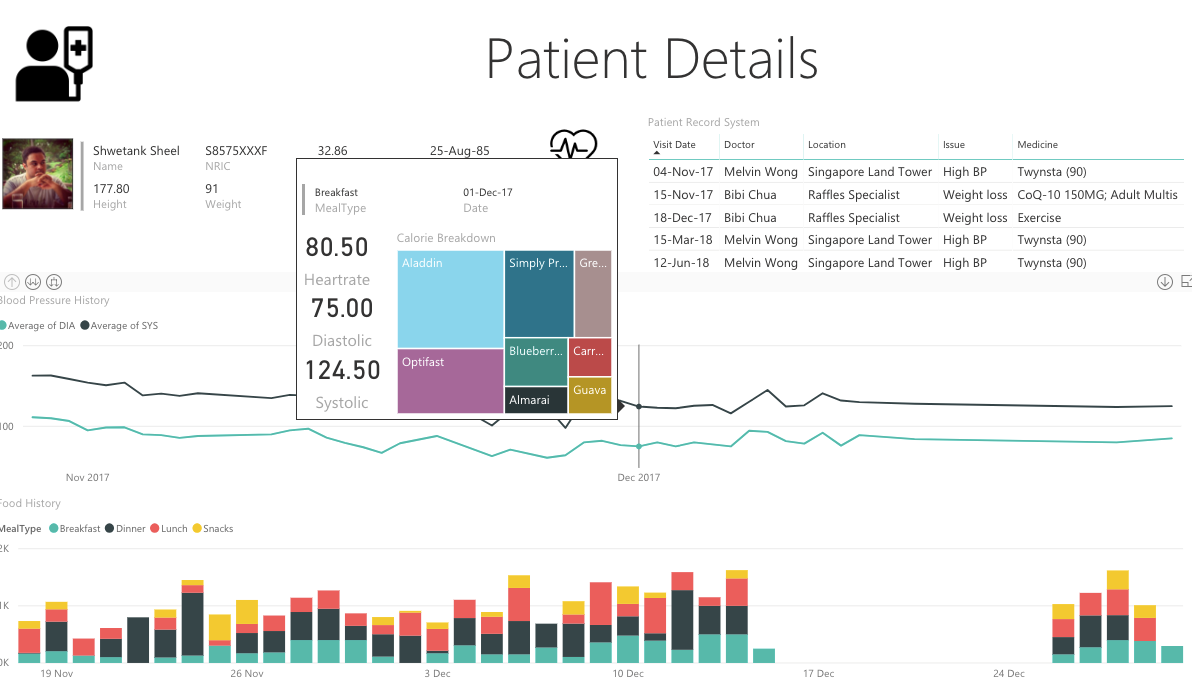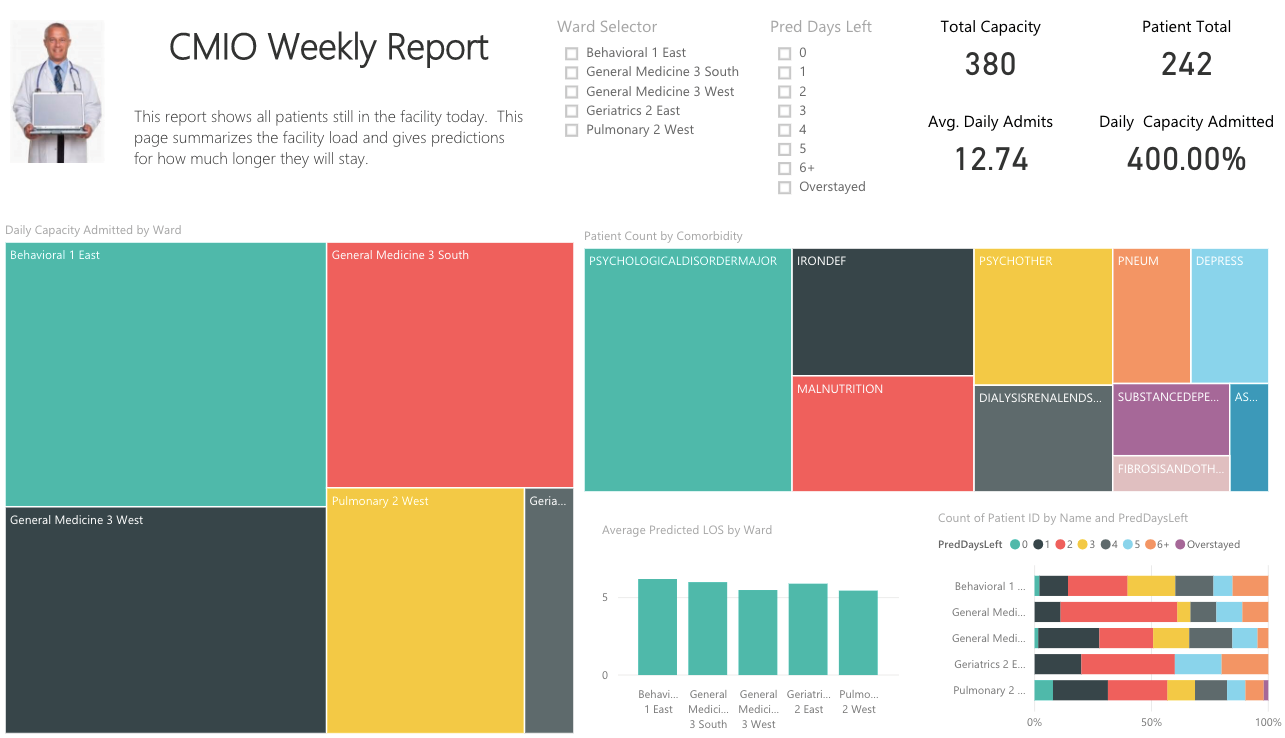- Decision support for doctors in diagnosis and determining the best course of treatment. Dashboards like this one can provide correlations between treatment and vital signs.

In this dashboard, we combine data from the clinical systems with data coming in from fitbit API for heart and activity data, blood pressure data from Qardio app, and calorie intake data from myfitnesspal API, to get a view of patient wellness and response to drugs on a continuous basis.
- Providing continuity of care and making sure that patients are monitored and engaged even after they are discharged, in order to prevent readmission.
- Translating a patient’s needs into forecasted man-hours, professional fees, length of stay and consumption of medicine and supplies allows administrators to make informed decisions on staffing, procurement of and other investments and budget allocations.
Below is an example of a dashboard that shows the hospital facility load and provides predictions for length of stay by Ward and other variables. Here’s a link to an interactive sample dashboard.

For predictive analytics to become reality, a healthcare provider needs:
- The ability to collect and consolidate high volumes of data into a properly architected data warehouse. These data sources can include the hospital information system and Electronic Medical Records, the hospital’s Enterprise Resource Planning system, and devices (from hospital equipment to personal wearables or other Internet of Things devices)
- A platform for analytics that can scale dynamically to support the volume and movement of data, and that complies with HIPAA and other required security and regulatory requirements.
- A means to consume, visualize and analyze the data. The more intuitive and user-friendly the better. It also helps to have views that are tailored for the different roles of people who are using the system.


